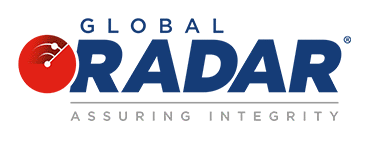The previous articles written for our feature on sanctions screening processes analyzed some of the severe financial penalties issued against numerous financial institutions found within the United States in recent years due to their lack of sanctions compliance, as well as the array of difficulties involved with maintaining sanctions compliance, due in large part to frequently evolving regulatory framework and other factors. Today we shift our focus to another area of the sanctions screening system that has also gained significant importance in recent years: PEP List Screening.
What Are PEP’s?
In efforts made to increase financial security both domestically and internationally, as well as to avoid reputational risk and financial penalties, anti-money laundering (AML) and counter-terrorism financing (CTF) regulations now require financial institutions to constantly monitor for sanctioned individuals and entities, including politically exposed persons (PEP’s). The Financial Action Task Force (FATF), an inter-governmental group which promotes the battle against illegal financial activity and other threats to the international financial system, loosely defines a PEP as “an individual who is or has been entrusted with a prominent public function”, and includes their close associates or family members (FATF Guidance, 2016). The FATF also states that “due to their position and influence, it is recognized that many PEP’s are in positions that potentially can be abused for the purpose of committing money laundering offenses and related predicate offenses, including corruption and bribery, as well as conducting activity related to terrorist financing” (FATF Guidance, 2016). Politically exposed persons are usually broken down into two groups: governmental PEP’s and organizational PEP’s. Examples of governmental PEP’s include legislative and executive bodies, diplomats, judiciary bodies, and state-owned enterprises, while examples of organizational PEP’s include international sports committees, high-ranking officers in the Armed Forces, and central financial institutions (Williams, 2016).
The Financial Action Task Force has developed an international standard for combating terrorism financing and money laundering, governing the 35 countries that it comprises. As a result of the high potential for risk involved with PEP’s, the FATF requires financial institutions and designated non-financial businesses and professions (DNFBP’s) within these countries to put risk management systems into action to prevent the misuse of the financial system by PEP’s, as well as to detect and report suspicious activity. Clearly, the need to check all new clients, both businesses and individuals against official sanctions and PEP lists as early as possible (optimally before or during initial enrollment or initial transaction) is vital for the health of a financial institution, as Julie Dimauro, executive editor for the FCPA Blog, explains in her article “Who should be on your PEP list?” Dimauro writes, “The penalties faced by companies that do not conduct appropriate compliance checks prove that even fairly low-level associations with public officials and organizations need to be considered” (Dimauro, 2014). She also implies that a PEP list needs to be kept up to date and should be verified against lists from official sources, while not remaining overly dependent on one specific source, as this can leads to greater vulnerability to risk for an institution.
Impact on an Institution’s Risk
It is estimated that over one billion unique financial relationships are screened each day across the globe. Couple this with approximately a thirty-percent annual increase in entities found on PEP lists, and monitoring of customer information and activity for possible high-risk connections poses a significant issue for organizations attempting to maintain regulatory compliance in the most cost-effective and efficient manner possible. The need for a financial institution to handle other aspects of daily operations that may also be of great importance, while attempting to circumvent the loss of valuable time and resources dedicated to screening processes, as well as avoiding penalties and additional consequences for non-compliance is a heavy load to bear indeed. In his article “Challenges in dealing with politically exposed persons” writer Kim-Kwang Raymond Choo of the Australian Institute of Criminology describes how PEP screening can be quite costly, and that regulated entities “should decide their level of screening (eg. Percentage of the customer database to match against and the fields and client attributes to use in the search) based on the perceived risk faced by the entity (Choo, 2010). Choo also suggests that the range of costs and inconveniences can be limited depending on the AML/CTF controls and solutions that are available to be utilized by a financial institution today.
In the past however, financial institutions have fallen victim to failures in the proper allocation of resources and workforce on compliance procedures and other bank requirements, and have been found to “ignore controls intended to prevent money laundering and related screens on PEP” leading to investigations, severe penalties, and the worst case scenario: closing of the banks altogether (Browning, 2010). A notable case involving penalties for dealings with PEP’s was found in 2015, as Barclays Bank was fined £72,069,400 ($89,993,060 USD) by the Financial Conduct Authority for “failing to minimize the risk that it may be used to facilitate financial crime” (FCA, 2015). The fine came as a result of a £1.88 billion pound ($2.35 billion USD) transaction which Barclays executed in 2011 involving several PEP’s that were not subjected to enhanced due diligence and monitoring by the bank. In this case, Barclays reportedly went to “unacceptable lengths to accommodate their clients”, foregoing standard procedures for dealing with high-risk individuals in an attempt to simply take on the clients as fast as possible, and as a result generated £52.3 million ($65.3m USD) in revenue (FCA, 2015). The previous largest fine ever handed down in regards to PEP screening came in 2012, when Coutts bank was fined “£8.75m ($10.93m USD) – for breaches of money-laundering rules after three years of ‘serious’ and ‘systemic’ problems in handling the affairs of customers vulnerable to corruption because of their political links” (Treanor, 2012).
PEP’s constitute significant challenges for compliance officers and institutions as a whole. Debra Geister, director of fraud prevention and compliance solutions at LexisNexis, states that the challenge for institutions primarily is found within the PEP screening process as “You have a name, and more baseline information, but in most cases you’re doing a match on a name only, which creates a lot of noise for the institution. So from the institution’s perspective, they should absolutely want to know when a customer is politically exposed, because that is part of their exam guidelines. I have to know that and how that risk fits into my organization” (McGlasson, 2008). Other challenges in regards to PEP list screening include criminals taking advantage of a regulatory differences between two or more jurisdictions to facilitate their money laundering activities, and a lack of clarity amongst international regulatory bodies to clearly define a politically exposed person, as there is no consensus global definition on the term. In addition, another challenge involves “domestic PEP’s” such as local politicians, for which there is no guidance in monitoring, forcing banks to do their due-diligence and utilize a methodical risk-based approach when analyzing these clients. This can lead to harmful errors if the process is performed using unreliable methods. Thus, the need for reliable and accurate sanctions and PEP screening solutions are essential for companies to remain compliant with federal and international sanctions regulations and avoid large financial penalties.
Global RADAR offers a dependable and effective PEP list screening solution that aids in compliance with Know Your Customer (KYC) regulations. Allowing you to utilize multi-field matching processes while screening against SDN (OFAC), sanction and PEP lists, Global RADAR allows you to suppress false positives and tremendously minimize the risks facing your institution.
For more information on the PEP and sanctions screening modules, as well as other services offered by Global RADAR, please visit the following link: https://zjede.beeweb-blue.io/watch-list-review-and-sanctions-screening/
Citations
Browning, Lynnley. “U.S. Report Details Money Laundering.” The
New York Times. The New York Times, 03 Feb. 2010. Web.
Choo, Kim-Kwang Raymond. “Challenges in Dealing with Politically
Exposed Persons.” Trends & Issues in Crime and Criminal Justice. Australian Institute of Criminology, Feb. 2010. Web.
DiMauro, Julie. “Who Should Be on Your PEP List? – The FCPA
Blog – The FCPA Blog.” Who Should Be on Your PEP List? . FCPA Blog, 23 Apr. 2014. Web.
“FCA Fines Barclays £72 Million for Poor Handling of Financial Crime
Risks.” Financial Conduct Authority, 25 Nov. 2015. Web.
McGlasson, Linda. “Politically Exposed Persons: Tips for How
Financial Institutions Should Handle Them.” Bank Information Security News, Training, Education – BankInfoSecurity. Bank Info Security, 2 June 2008. Web.
“Politically Exposed Persons.” Handbook of Anti Money Laundering
(2015): 207-16. FATF Guidance. June 2013. Web.
Treanor, Jill. “Queen’s Banker Fined for Poor Money Laundering
Checks.” The Guardian. Guardian News and Media, 26 Mar. 2012. Web.
Williams, Cindy. “Politically Exposed Persons – What Do You Do?”
The WORKS Blog by PolicyWorks. 16 Aug. 2016. Web. 30 Nov. 2016.

